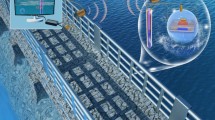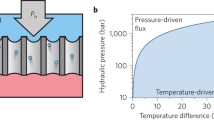Abstract
Microbial fuel cells (MFCs) are energy sources, which generate electrical charge thanks to bacteria metabolism. We report on a full custom pressure wireless sensor node especially designed to operate with MFCs, comprising an ultra-low-power Impulse-Radio Ultra-Wide-Band Transmitter operating in the low 0–960 MHz band, a nanostructured piezoresistive pressure sensor connected to a discrete component digital read-out circuit, and an MFC energy supply system. The sensor device comprises an insulating matrix of polydimethylsiloxane and nanostructured multi-branched copper microparticles as conductive filler. Our prototype system comprises two MFCs connected in series to power both the UWB transmitter, which consumes 40 μW, and the read-out circuit. The two MFCs generate an open circuit voltage of 1.2 ± 0.1 V. Each MFC prototype has a total volume of 0.34 L and comprises two circular poly(methyl methacrylate) chambers (anode and cathode) separated by a cation exchange membrane. The paper reports measurements on a fully working prototype that enables the separate transmission of pressure information and MFC voltage level at the same time. The complete sensor node powered by the MFC, thanks to its nature can be located either in harsh environments where there is no connection to energy grids, or in environments where the MFC, hence the complete node, can self-sustain.









Similar content being viewed by others
References
Akyldiz I, Pompili D, Melodia T (2005) Underwater acoustic sensor networks: research challenges. Ad Hoc Netw 3:257–279
Bloor D, Donnelly K, Hands P et al (2005) A metal–polymer composite with unusual properties. J Phys D Apll Phys 38:2851–2860
Canavese G, Lombardi M, Stassi S, Pirri C (2012a) Comprehensive characterization of large piezoresistive variation of Ni-PDMS composites. Appl Mech Mater 110–116:1336–1344
Canavese G, Stassi S, Stralla M et al (2012b) Stretchable and conformable metal-polymer piezoresistive hybrid system. Sensors Actuators A Phys 186:191–197
Cheng S, Logan BE (2011) Increasing power generation for scaling up single-chamber air cathode microbial fuel cells. Bioresour Technol 102:4468–4473
Chiolerio A, Chiodoni A, Allia P (2008) Elemental distribution and morphological analysis of layered metallic systems: application to Co–Sn evaporated multilayers. Thin Solid Films 516:8453–8461
Chiolerio A, Roppolo I, Sangermano M (2013) Radical diffusion engineering: tailored nanocomposite materials for piezoresistive inkjet printed strain measurement. RSC Adv 3:3446–3452
Crepaldi M, Demarchi D (2013) A 130 nm CMOS 0.007 mm2 ring oscillator-based self-calibrating IR-UWB transmitter using an asynchronous logic duty-cycled PLL. IEEE Trans Circuits Syst Express Briefs 60:237–241
Crepaldi M, Li C, Fernandes JR, Kinget PR (2011) An ultra-wideband impulse-radio transceiver chipset using synchronized-OOK modulation. IEEE J Solid State Circuits 46:2284–2299
Crepaldi M, Daprá D, Bonanno A et al (2012) Energy detection receivers. IEEE Trans Circuits Syst Regul Pap 59:2443–2455
Crepaldi M, Chiolerio A, Tommasi T et al (2013a) A low complexity wireless microbial fuel cell monitor using piezoresistive sensors and impulse-radio Ultra-Wide-Band. In: Proceedings of the SPIE 8763, Smart Sensors, Actuators, MEMS VI, 876311
Crepaldi M, Macis S, Motto Ros P, Demarchi D (2013b) A 0.07 mm2 asynchronous logic CMOS pulsed receiver based on radio events self-synchronization. IEEE Trans Circuits Syst Regul Pap. (In press)
Di Lorenzo M, Curtis TP, Head IM, Scott K (2009) A single-chamber microbial fuel cell as a biosensor for wastewaters. Water Res 43:3145–3154
Diamond D, Coyle S, Scarmagnani S, Hayes J (2008) Wireless sensor networks and chemo-/biosensing. Chem Rev 108:652–679
Donovan C, Dewan A, Heo D, Beyenal H (2008) Batteryless, wireless sensor powered by a sediment microbial fuel cell. Environ Sci Technol 42:8591–8596
Eaton WPSJ (1997) Micromachined pressure sensors—review and recent developments. Smart Mater Struct 6:539
Gorlatova M, Kinget P, Kimissis I et al (2010) Energy harvesting active networked tags (EnHANTs) for Ubiquitous object networking. IEEE Wirel Commun 6:18–25
Guenther M, Gerlach G, Wallmersperger T (2010) Piezoresistive biochemical sensors based on hydrogels. Microsyst Technol 16:703–715
Ieropoulos I, Anderson I, Gisby T et al (2008) Microbial-powered artificial muscles for autonomous robots. Towar Auton Robot Syst Conf, pp 209–216
Jong B, Kim B, Cheng I et al (2006) Enrichment performance and microbial diversity of a thermophilic mediatorless microbial fuel cell. Environ Sci Technol 40:6449–6454
Logan BE (2010) Scaling up microbial fuel cells. Appl Microbio Biotechnol 85:1665–1671
Motto Ros P, Paleari M, Sanginario A et al (2013) A wireless address-event representation system for ATC-based multi-channel force wireless transmission. IWASI 2013:57–62
Müller M, Müller C, Gromball F et al (2003) Micro-structured flow fields for small fuel cells. Microsyst Technol 9:159–162
Park J-D, Ren Z (2012) Hysteresis-controller-based energy harvesting scheme for microbial fuel cells with parallel operation capability. Energy Convers IEEE Trans 27:715–724
Rabaey K, Verstraete W (2005) Microbial fuel cells: novel biotechnology for energy generation. Trends Biotechnol 23:291–298
Reimers CE, Girguis P, Stecher III HA et al (2006) Microbial fuel cell energy from an ocean cold seep. Geobiology 4:123–136
Ren H, Lee H, Chae J (2012) Miniaturizing microbial fuel cells for potential portable power sources: promises and challenges. Microfluid Nanofluid 13:353–381
Ruggeri B, Tommasi T (2012) Efficiency and efficacy of pre-treatment and bioreaction for bio-H 2 energy production from organic waste. Int J Hydrogen Energy 37:6491–6502
Ruggeri B, Bernardi M, Tommasi T (2012) On the pre-treatment of municipal organic waste towards fuel production: a review. Int J Environ Pollut 49:226–250
Stassi S, Canavese G, Cauda V et al (2012a) Evaluation of different conductive nanostructured particles as filler in smart piezoresistive composites. Nanoscale Res Lett 7:327–330
Stassi S, Canavese G, Cosiansi F et al (2012b) A tactile sensor device exploiting the tunable sensitivity of copper-PDMS piezoresistive composite. Procedia Eng 47:659–663
Stassi S, Cauda V, Canavese G et al (2012c) Synthesis and characterization of gold nanostars as filler of tunneling conductive polymer composites. Eur J Inorg Chem 16:2669–2673
Xie X, Ye M, Hu L et al (2012) Carbon nanotube-coated macroporous sponge for microbial fuel cell electrodes. Energy Environ Sci 5:5265–5270
Yousef H, Boukallel M, Althoefer KJ (2011) Tactile sensing for dexterous in-hand manipulation in robotics—a review. Sensors Actuators A Phys 2:171–187
Author information
Authors and Affiliations
Corresponding author
Rights and permissions
About this article
Cite this article
Tommasi, T., Chiolerio, A., Crepaldi, M. et al. A microbial fuel cell powering an all-digital piezoresistive wireless sensor system. Microsyst Technol 20, 1023–1033 (2014). https://doi.org/10.1007/s00542-014-2104-0
Received:
Accepted:
Published:
Issue Date:
DOI: https://doi.org/10.1007/s00542-014-2104-0




